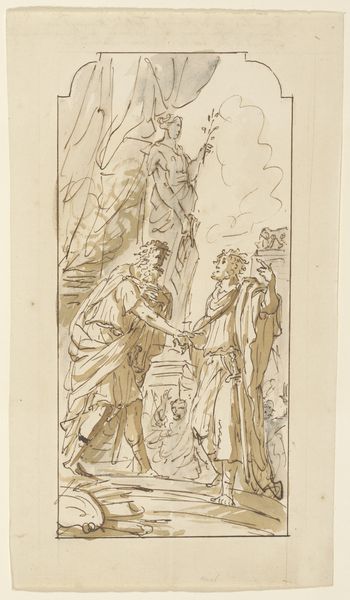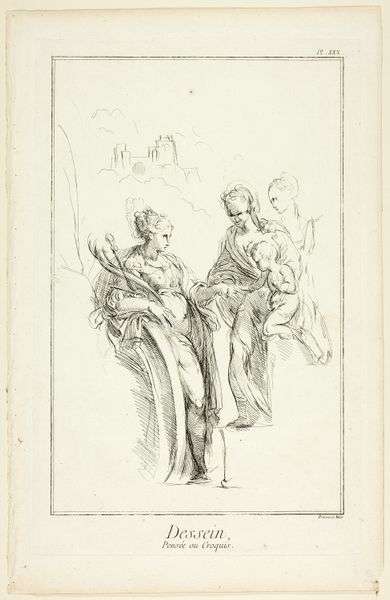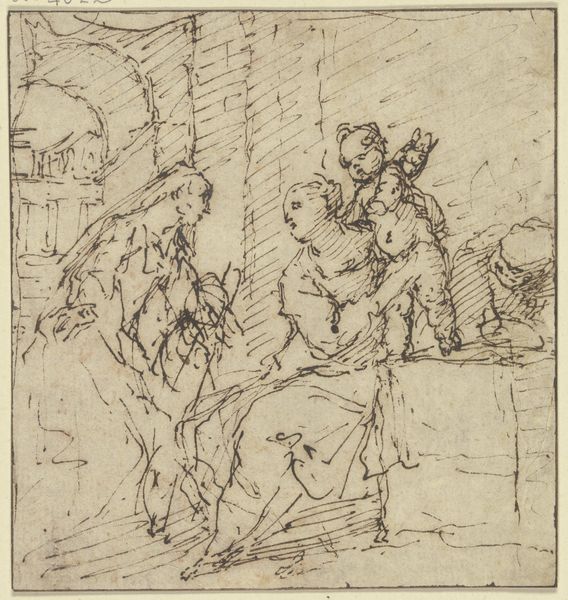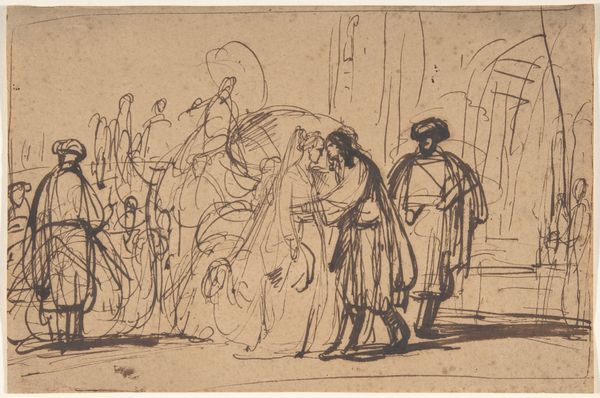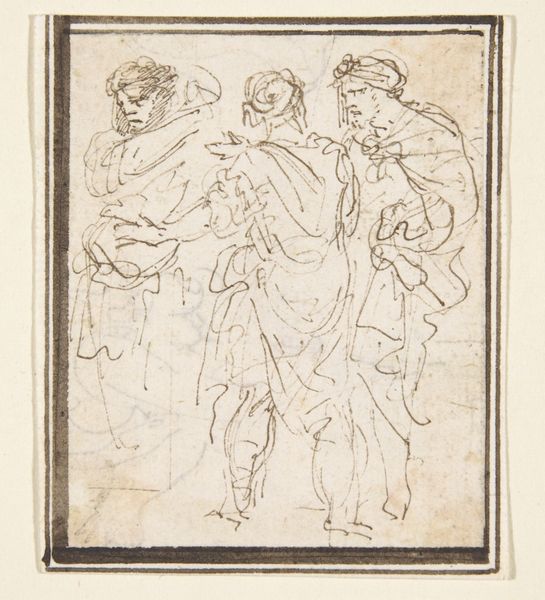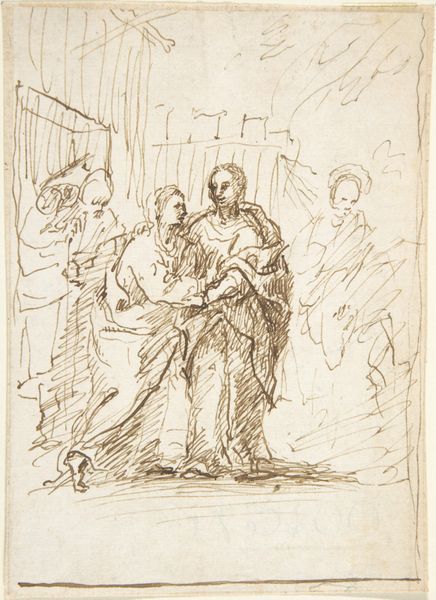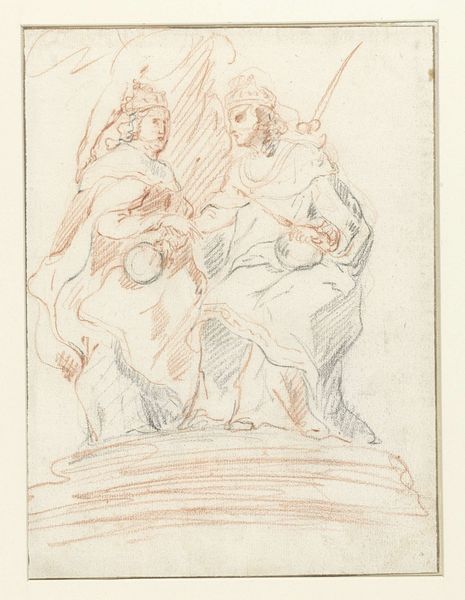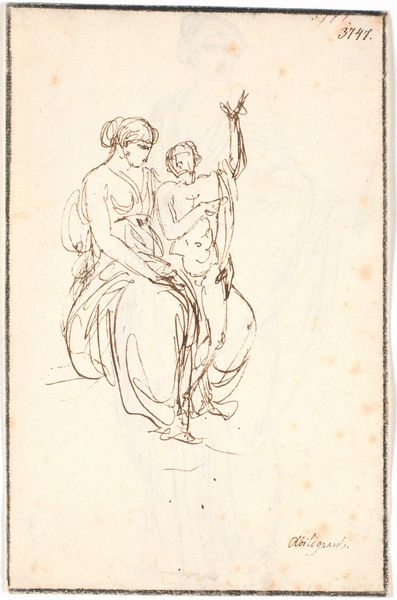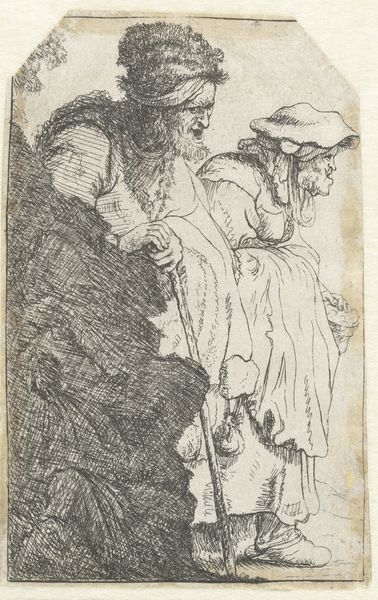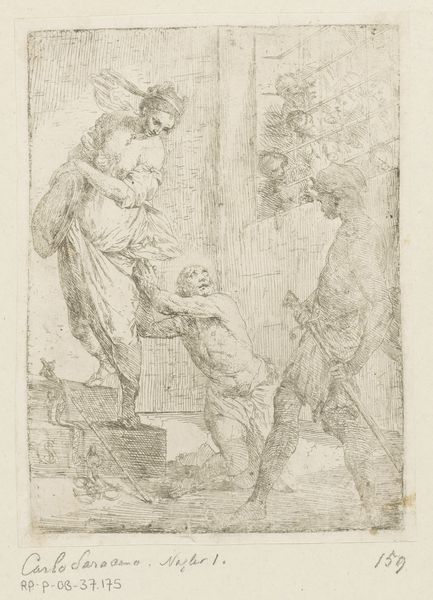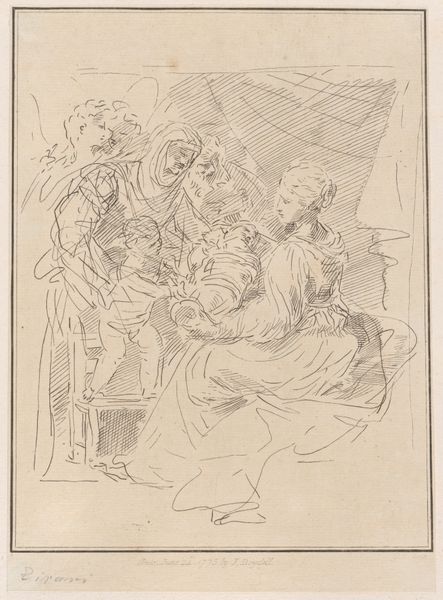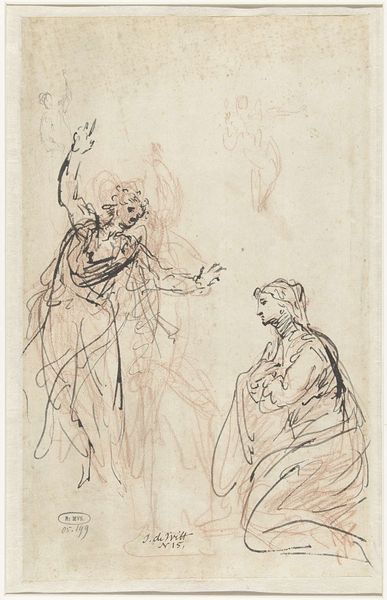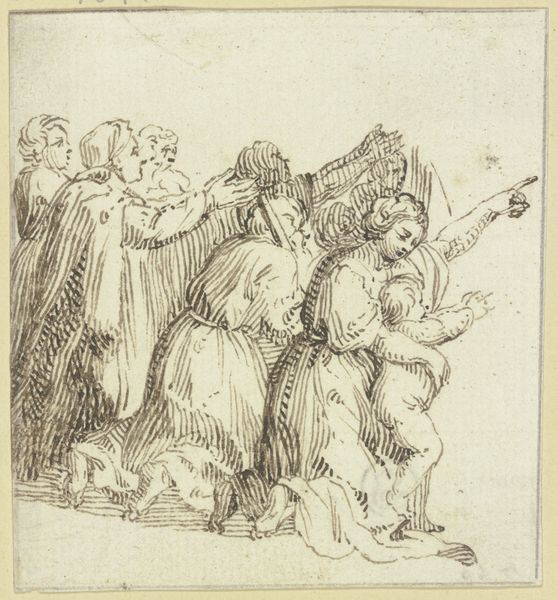
drawing, ink, indian-ink
#
drawing
#
pen sketch
#
figuration
#
ink
#
indian-ink
#
13_16th-century
#
14_17th-century
#
history-painting
#
italian-renaissance
Copyright: Public Domain
Curator: Welcome. Today we're looking at Giuseppe Porta's drawing, "The Visitation of Mary." Executed in pen and Indian ink, this piece resides at the Städel Museum. Editor: My immediate sense is one of intimacy. Despite the spare lines, you really get a feel for the quiet anticipation and burgeoning life within these women. Curator: Indeed. The artist uses line weight masterfully to define the contours of the figures and drapery, creating a sense of volume despite the flatness of the medium. Note how the parallel lines suggest the folds of their garments, but also seem to vibrate with latent energy. Editor: I think that "latent energy" really gets at the heart of it. The visitation narrative—Mary and Elizabeth meeting, both pregnant—speaks volumes about female solidarity in a patriarchal society. Their encounter carries significant weight, defying societal expectations through the lens of religious art. Curator: Semiotically speaking, the meeting can also be seen as a representation of the Old Testament meeting the New Testament, the transition and transformation of religious beliefs, very much a stylistic concern during the Italian Renaissance. Editor: Exactly. Placing this encounter within that socio-historical frame illuminates how this piece, regardless of Porta's specific intentions, offers a subversive celebration of feminine virtue, and spiritual authority outside traditional channels. I mean, Mary and Elizabeth were undoubtedly underdogs at the time, don't you think? Curator: I wouldn't deny the strong emotions involved, certainly. However, if you inspect closely the structural balance, it is really about classical, Renaissance principles: symmetry in composition, balance, stable geometric forms and an overall search for perfection, where emotion is certainly secondary. Editor: Yet can't the technical precision serve the very emotion we observe? Curator: Undoubtedly. But to privilege, or over-privilege, one reading over another risks diminishing its complexities as a masterful artistic statement of form. Editor: A sentiment I share when applied to contextual factors as well! Curator: Thank you for adding further richness to appreciating this Italian drawing. Editor: An invigorating discussion about art's lasting relevance, thanks.
Comments
No comments
Be the first to comment and join the conversation on the ultimate creative platform.
